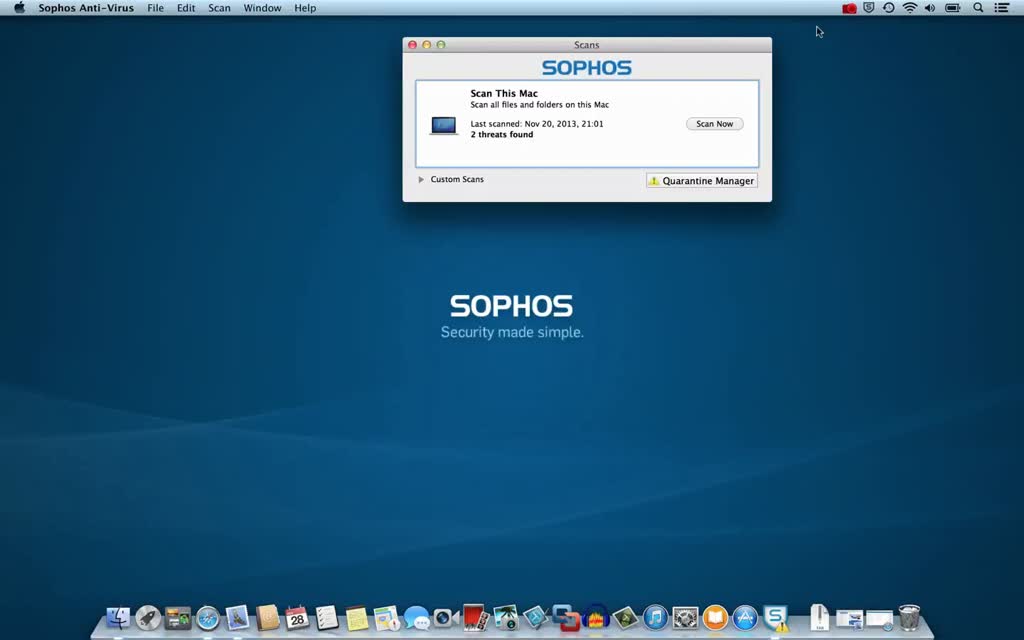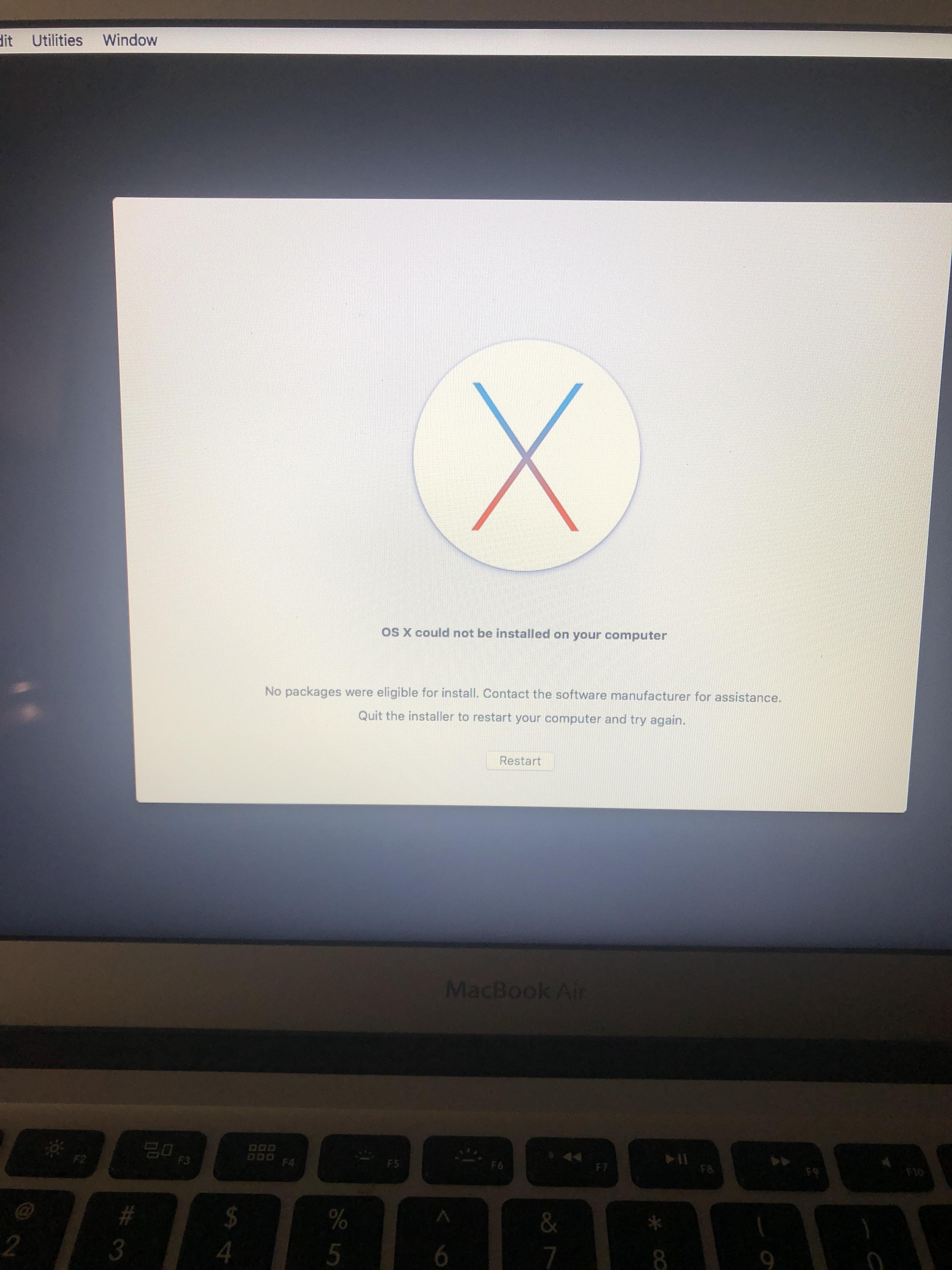- Install Os El Capitan
- Reinstall Mac El Capitan
- Reinstall Mac Os El Capitan Error
- Reinstall Mac Os El Capitan Without Apple Id
- Reinstall Mac El Capitan From Usb
10 thoughts on “ How to overcome OS X 10.11 El Capitan not installing ” hydrovacing October 2, 2015 at 7:30 am. Anyone know know another way to download EL Captain. I have had on of my Mac’s trying to download it since it came out. It is now at this moment at 4.81 GB. Hello guys, I'm trying to reinstall a fresh copy of OSX EL CAPITAN and I got stuck here for hours 1- The same OSX was already installed on this MacBook pro 2- it is early 2011 3- I had made the most secure erase of the disk before attempting to reinstall (7passes) 4- it does not give me any. Mar 18, 2016 Step 08. Now we are going to install Mac OS X El Capitan. Select Reinstall OS X in the Recovery Mode. Click Continue when the OS X installer comes up. Download mac os catalina virtualbox. It will ask to select Agree or Disagree few times. Click on Agree or Continue on all selections. When the installing process is done, you need to configure settings. Very easy way to reinstall Mac if you are thinking about selling your computer or simply need to install a fresh copy OS X El Capitan follow the tutorial to.
To get the latest features and maintain the security, stability, compatibility, and performance of your Mac, it's important to keep your software up to date. Apple recommends that you always use the latest macOS that is compatible with your Mac.
Learn how to upgrade to macOS Big Sur, the latest version of macOS.
Check compatibility
The version of macOS that came with your Mac is the earliest version it can use. For example, if your Mac came with macOS Big Sur, it will not accept installation of macOS Catalina or earlier.
If a macOS can't be used on your Mac, the App Store or installer will let you know. For example, it might say that it's not compatible with this device or is too old to be opened on this version of macOS. To confirm compatibility before downloading, check the minimum hardware requirements:
Install Os El Capitan

- macOS Catalina 10.15 hardware requirements
- macOS Mojave 10.14 hardware requirements
- macOS High Sierra 10.13 hardware requirements
- macOS Sierra 10.12 hardware requirements
- OS X El Capitan 10.11 hardware requirements
- OS X Yosemite 10.10 hardware requirements

Download macOS using Safari on your Mac

Safari uses these links to find the old installers in the App Store. After downloading from the App Store, the installer opens automatically.
- macOS Catalina 10.15 can upgrade Mojave, High Sierra, Sierra, El Capitan, Yosemite, Mavericks
- macOS Mojave 10.14 can upgrade High Sierra, Sierra, El Capitan, Yosemite, Mavericks, Mountain Lion
- macOS High Sierra 10.13 can upgrade Sierra, El Capitan, Yosemite, Mavericks, Mountain Lion
Safari downloads the following older installers as a disk image named InstallOS.dmg or InstallMacOSX.dmg. Open the disk image, then open the .pkg installer inside the disk image. It installs an app named Install [Version Name]. Open that app from your Applications folder to begin installing the operating system.
- macOS Sierra 10.12 can upgrade El Capitan, Yosemite, Mavericks, Mountain Lion, or Lion
- OS X El Capitan 10.11 can upgrade Yosemite, Mavericks, Mountain Lion, Lion, or Snow Leopard
- OS X Yosemite 10.10can upgrade Mavericks, Mountain Lion, Lion, or Snow Leopard
Rachel is trying to sell her Mac, but…
Reinstall Mac El Capitan
My friend was wiping my Mac so I could sell it and I’m pretty sure they’ve deleted the start up disk? It’s not letting me reinstall the OS on a recovery startup.
She wonders about a fix. There are a couple of options with an erased partition.
Because Recovery didn’t work, the fastest way to install fresh is to make or borrow a macOS installer on a USB flash drive or a disk drive. We have instructions for making a bootable installer with macOS Sierra (as well as archived versions for several previous releases). You need at least an 8GB flash drive. The article includes instructions on obtaining the installer, which might involve you having to use someone’s else Mac to download it, if you don’t have a replacement Mac on hand yet.
But if you can’t get access to another Mac or the necessary drive, it’s still possible to use a different Recovery mode on all recent Macs, dating back to 2010. Normally, you can start up a Mac while holding down Command-R to boot into what Apple now calls macOS Recovery. That allows you to run Disk Utility, reinstall or wipe and install the system, access Terminal for command-line functions, and so on. In that mode, when you choose to reinstall without erasing the drive, my recollection is that Recovery looks for the current OS system installer on your startup disk in the Applications folder, and uses that. (Apple doesn’t document that, and I haven’t had to test that for years.)
Failing finding it, Recovery downloads the currently installed version of macOS (or OS X), which is about 5GB. When complete, it installs it and reboots, and places the installer in the Applications folder.
However, there’s yet another option: macOS Recovery over the Internet, which requires either a Mac model released in 2012 or later, or most 2010 and 2011 models with a firmware upgrade applied. There, the Mac reaches out over a Wi-Fi or ethernet connection to download the relatively modest Recovery software, which then bootstraps the download of the full macOS installer.
Apple says Internet-based Recovery should happen automatically on supported models, and you should see a spinning globe when that mode is invoked while the download occurs. However, if you have normal Recovery installed and it refuses to install macOS for some reason, you can manually invoke Internet Recovery.
Reinstall Mac Os El Capitan Error
While Command-R at startup always installs whatever the most recent version you installed on your Mac, holding down Command-Option-R brings down the very latest compatible version that can be installed. Apple also offers Shift-Command-Option-R, which installs the version of OS X or macOS with which your computer shipped, or the next oldest compatible system still available for download.
(Apple just changed this behavior with 10.12.4, but if you’re using Internet Recovery for a clean install on an erased drive, the new behavior should be active as it will be pulled from the version of Recovery that’s bootstrapped from Apple’s servers. The pre-10.12.4 option is simply Command-Option-R, but it acts like the new Shift-Command-Option-R, installing the shipped OS or the oldest compatible version.)
Apple recommends the Command-Option-R option as the only safe way to reinstall a Mac with El Capitan or earlier versions of macOS if you want to be sure your Apple ID doesn’t persist even after erasure.
Ask Mac 911
Reinstall Mac Os El Capitan Without Apple Id

Reinstall Mac El Capitan From Usb
We’ve compiled a list of the questions we get asked most frequently along with answers and links to columns: read our super FAQ to see if your question is covered. If not, we’re always looking for new problems to solve! Email yours to mac911@macworld.com including screen captures as appropriate. Mac 911 can’t reply to—nor publish an answer to—every question, and we don’t provide direct troubleshooting advice.